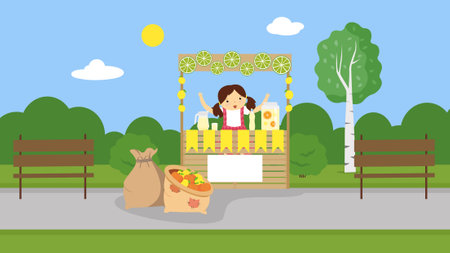The Importance of Meal Planning for Toddlers
Meal planning for toddlers isn’t just a trend—it’s a game changer for busy American families looking to balance nutrition, convenience, and peace of mind. During the toddler years, children experience rapid growth and development, making it essential to provide them with well-rounded meals packed with nutrients. Thoughtful meal planning ensures that your little one gets the right mix of proteins, healthy fats, fruits, and veggies, which supports their physical growth, brain development, and immunity. Beyond nutrition, having a meal plan in place helps parents avoid last-minute scrambles or reliance on less healthy take-out options. It reduces mealtime stress by eliminating daily guesswork and allows for smoother grocery shopping trips and budget management. Ultimately, meal planning is key for setting up positive eating habits early on while making family mealtimes more enjoyable and less chaotic.
2. Toddler Nutrition Basics
Understanding your toddler’s nutritional needs is the foundation of effective meal planning. At this age, children are rapidly growing and developing, which means they need a balanced intake of essential nutrients in the right portions. Here’s what American parents should keep in mind:
Essential Nutrients for Toddlers
Toddlers need a mix of macronutrients (carbohydrates, proteins, and fats) and micronutrients (vitamins and minerals) to support their growth and energy needs. Here’s a quick breakdown:
| Nutrient | Main Sources | Why It Matters |
|---|---|---|
| Protein | Chicken, turkey, eggs, beans, tofu, Greek yogurt | Builds muscles and supports immune function |
| Carbohydrates | Whole grains, fruits, vegetables, potatoes | Main source of energy for active toddlers |
| Healthy Fats | Avocado, nut butters, olive oil, fish | Supports brain development and hormone production |
| Calcium & Vitamin D | Dairy products, fortified plant milks, broccoli | Strengthens bones and teeth |
| Iron | Lean meats, spinach, lentils, iron-fortified cereals | Prevents anemia and boosts cognitive development |
Recommended Portion Sizes
Toddler portion sizes are much smaller than those for older kids or adults. Overfeeding can lead to unhealthy habits later on. Here’s a helpful guide:
| Food Group | Toddler Portion Size (per meal) |
|---|---|
| Protein Foods | 1 ounce (about 2 tablespoons cooked meat or 1 egg) |
| Grains/Breads | 1/4 to 1/2 slice bread or 1/4 cup cooked pasta/rice/cereal |
| Dairy | 1/2 cup milk or yogurt; 1/2 ounce cheese |
| Fruits & Veggies | 1-2 tablespoons per year of age (e.g., 2-4 tbsp for a 2-year-old) |
Encouraging Age-Appropriate Eating Habits
- Offer a variety of foods from all food groups daily—don’t stress if your toddler refuses some foods at first; repeated exposure often helps.
- Let your child decide how much to eat from what you offer—avoid pressuring them to finish everything.
- Keep meals and snacks on a regular schedule; toddlers thrive on routine.
- Limit sugary drinks and processed snacks; stick with water and whole foods as much as possible.
- Model healthy eating habits—toddlers love to imitate adults.
A balanced approach to nutrition ensures your toddler gets what they need to grow strong and healthy while making mealtime less stressful for busy parents.

3. Tips for Busy Parents
Managing meals for toddlers can be overwhelming, especially when you’re juggling work, household chores, and family time. Here are some practical strategies to make meal planning easier, save time in the kitchen, and tackle picky eating habits:
Simplify Meal Prep
Batch cooking is a game-changer for busy parents. Set aside a couple of hours on the weekend to prep ingredients or cook staple meals like pasta, rice, or grilled chicken that can be used in multiple dishes throughout the week. Pre-cut fruits and veggies and store them in grab-and-go containers for easy snacks or quick additions to meals.
Cut Down on Kitchen Time
Embrace one-pot or sheet pan recipes—they minimize cleanup and let you prepare an entire meal at once. Slow cookers and Instant Pots are also lifesavers for making nutritious toddler-friendly meals with minimal effort. Don’t hesitate to use frozen vegetables; they’re just as healthy as fresh and save precious prep time.
Handling Picky Eating
Picky eating is common among toddlers, but consistency and patience go a long way. Offer a variety of foods, including at least one familiar item at each meal. Involve your child in choosing groceries or helping with simple tasks like washing veggies. Make food fun by using cookie cutters for sandwiches or arranging colorful plates. Remember, it’s normal for toddlers’ appetites to fluctuate, so keep mealtimes stress-free and avoid pressuring them to eat.
Easy Breakfast Recipes
Getting your toddler to eat a healthy breakfast can be a challenge, especially when mornings are busy. But with a little meal planning and some simple recipes, you can make sure your little one starts the day with the nutrition they need. Here are some quick, nutritious, and toddler-approved breakfast ideas that fit perfectly into a hectic family routine.
Toddler-Friendly Breakfast Table
| Recipe | Prep Time | Main Ingredients | Why Kids Love It |
|---|---|---|---|
| Banana Oat Pancakes | 10 minutes | Oats, banana, egg, cinnamon | Soft texture and naturally sweet flavor |
| Mini Veggie Egg Muffins | 15 minutes | Eggs, spinach, bell pepper, cheese | Bite-sized and easy to hold |
| Peanut Butter & Apple Toast | 5 minutes | Whole wheat bread, peanut butter, apple slices | Crispy and creamy with a hint of sweetness |
| Yogurt Parfait Cups | 5 minutes | Greek yogurt, berries, granola (low sugar) | Layered colors and fun textures |
| Pumpkin Waffles (freezer-friendly) | 15 minutes (prep ahead) | Pumpkin puree, whole grain flour, eggs, spices | Slightly sweet and perfect for tiny hands |
Tips for Fast and Healthy Breakfasts
- Prep Ahead: Make pancakes or egg muffins on weekends and store them in the fridge or freezer for grab-and-go breakfasts during the week.
- Create a Rotation: Having a set list of go-to breakfasts saves time thinking about what to make each morning.
- Add Fun Shapes: Use cookie cutters for toast or pancakes to make breakfast more exciting for picky eaters.
- Ditch the Sugar: Choose whole fruit over juice and skip added sugars whenever possible.
- Mingle Flavors: Mix veggies into eggs or add fruit to yogurt to introduce new flavors in familiar foods.
The Bottom Line on Toddler Breakfasts
A balanced breakfast sets the tone for your toddler’s day. With these easy recipes and tips, you’ll have more time for morning cuddles and less stress over what’s on the plate. Remember: simple ingredients and creative presentation can go a long way toward happy, healthy meals that even the pickiest toddler will enjoy!
5. Healthy Lunch & Dinner Ideas
When it comes to lunch and dinner for toddlers, keeping meals simple, nutritious, and appealing is key. Here are some easy-to-make recipes that use familiar ingredients and flavors most American toddlers already enjoy. These dishes are quick to prepare and can be adapted to suit your child’s preferences or dietary needs.
Turkey & Cheese Roll-Ups
Lay out whole wheat tortillas, spread a thin layer of cream cheese, and add slices of turkey breast and mild cheddar cheese. Roll them up tightly and slice into bite-sized pieces. Serve with baby carrots and apple slices for a balanced meal.
Mini Chicken & Veggie Quesadillas
Sprinkle shredded cooked chicken, black beans, finely chopped bell peppers, and shredded Monterey Jack cheese onto a small tortilla. Top with another tortilla and cook on a skillet until golden brown. Cut into wedges and serve with mild salsa or Greek yogurt for dipping.
Homemade Mac & Cheese with Peas
Prepare whole wheat elbow pasta according to package instructions. In a separate pot, melt a little butter, stir in flour, then slowly add milk to make a creamy sauce. Mix in shredded cheddar cheese until melted, then add the pasta and frozen peas. Stir well to combine—a comforting favorite with a veggie boost!
Baked Salmon Nuggets
Cut boneless salmon fillets into small chunks, dip in beaten egg, then coat with crushed whole grain crackers. Bake at 400°F until crispy. These nuggets pair perfectly with sweet potato fries or steamed broccoli florets.
Pasta Primavera
Cook small-shaped pasta like rotini or shells, then toss with steamed mixed vegetables such as carrots, zucchini, and peas. Add a drizzle of olive oil and sprinkle with Parmesan cheese for extra flavor. This dish is colorful, tasty, and packed with nutrients.
These lunch and dinner ideas make mealtime less stressful while ensuring your toddler gets the nutrition they need. Feel free to mix-and-match veggies or proteins based on what your child likes best!
6. Make-Ahead Snacks and On-the-Go Options
Busy parents know that toddlers need snacks throughout the day, whether you’re at home, heading to the park, or running errands. Having portable, healthy options on hand can make all the difference when hunger strikes. Here are some easy, make-ahead snack ideas that fit perfectly into your toddler meal planning routine and suit the American lifestyle.
Wholesome Snack Recipes for Toddlers
Try prepping simple snacks like mini whole wheat muffins made with applesauce or mashed bananas—these freeze well and can be packed into snack bags for quick grab-and-go treats. Homemade granola bars (with oats, nut butter, and a touch of honey for kids over one year) are another great option; just cut them into toddler-sized pieces for easy handling.
Fresh and Fun Produce Packs
Create ready-to-eat produce packs by slicing up baby carrots, cucumber rounds, or seedless grapes (cut in half for safety). Pair these with single-serve portions of hummus or yogurt-based dips in small containers to encourage dipping and boost nutrition.
Protein-Packed Bites
Hard-boiled eggs, cheese sticks, and turkey roll-ups are excellent sources of protein and easy to pack. For plant-based options, try roasting chickpeas with a sprinkle of cinnamon or seasoning—crunchy, satisfying, and fun for little hands.
Tips for Packing On-the-Go Snacks
Use reusable snack containers or silicone pouches to keep snacks fresh and reduce waste. Always include an ice pack if you’re bringing dairy or perishable items. Don’t forget water bottles to keep your toddler hydrated during outings!
By preparing these make-ahead snacks, you’ll have nutritious choices ready whenever your toddler’s appetite kicks in—helping you manage busy days while supporting their health and happiness.


